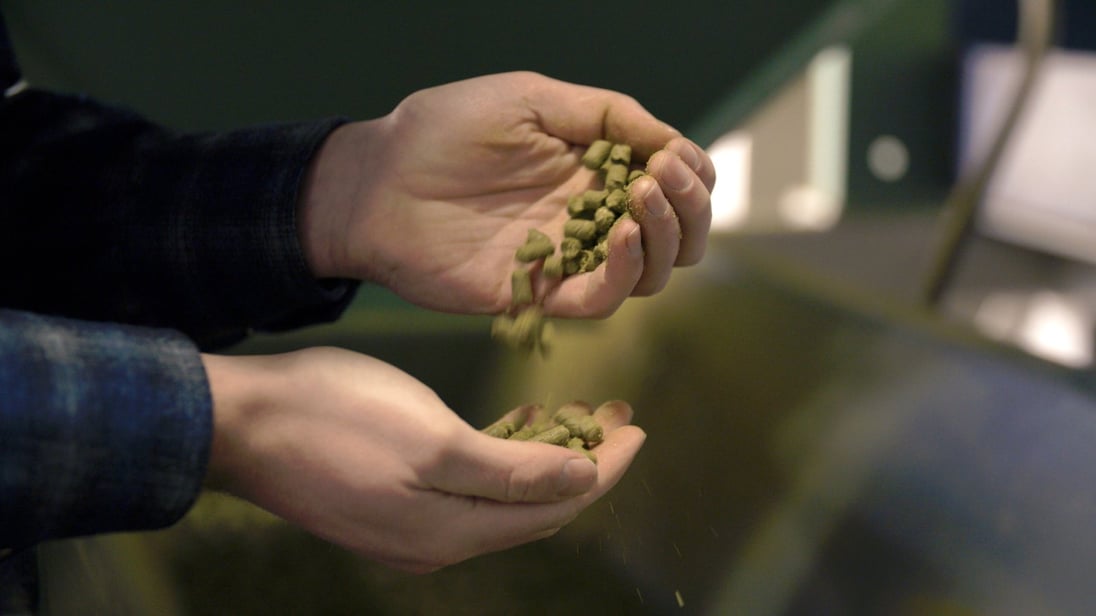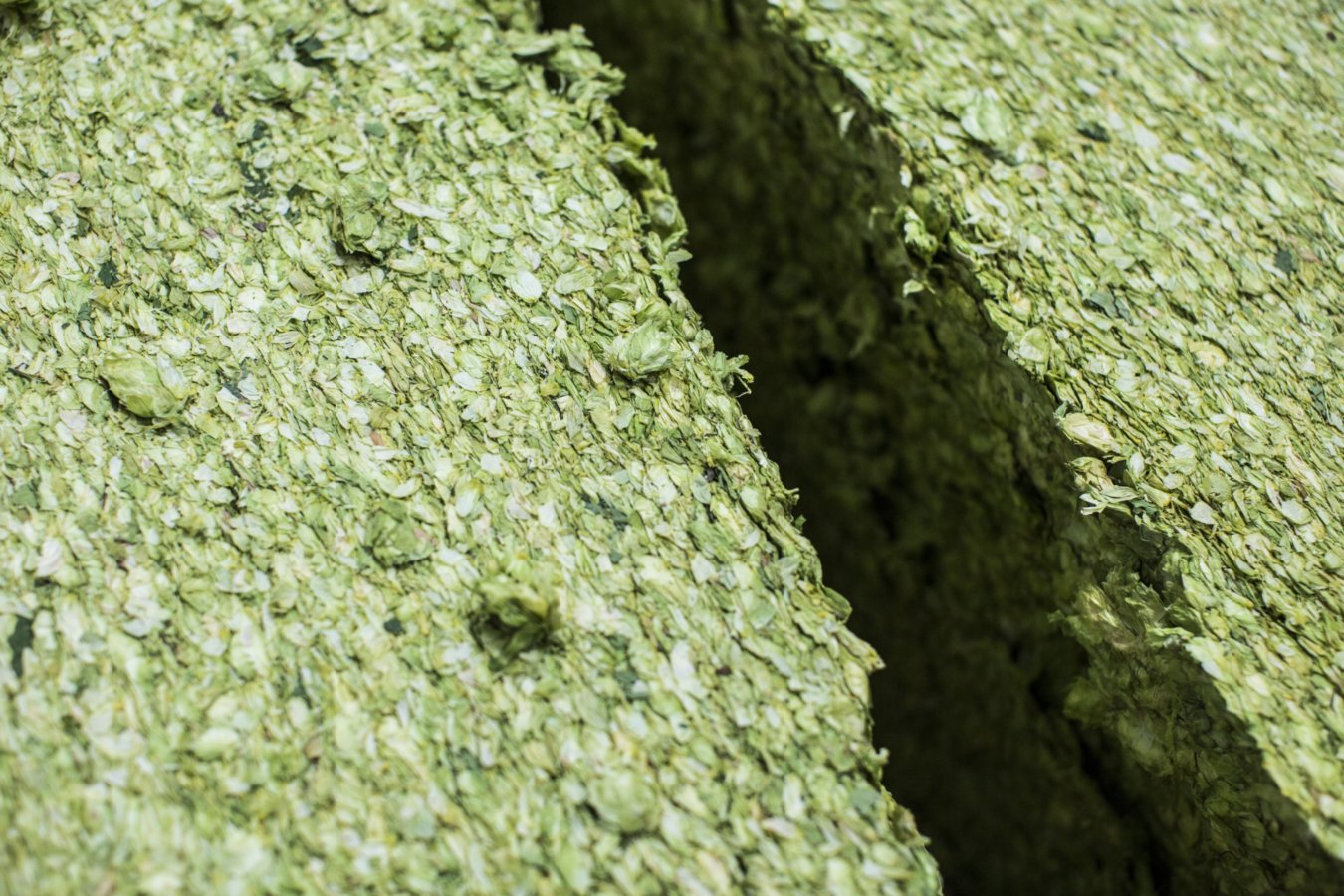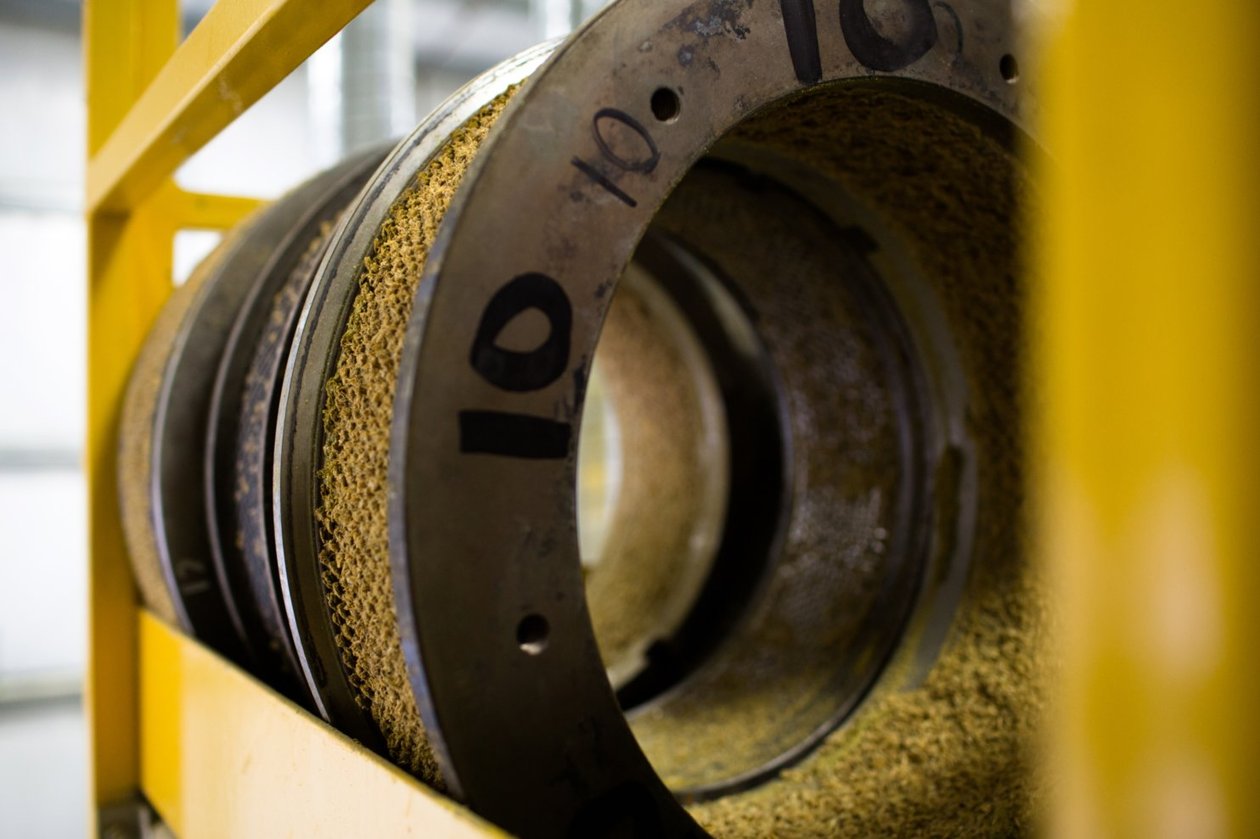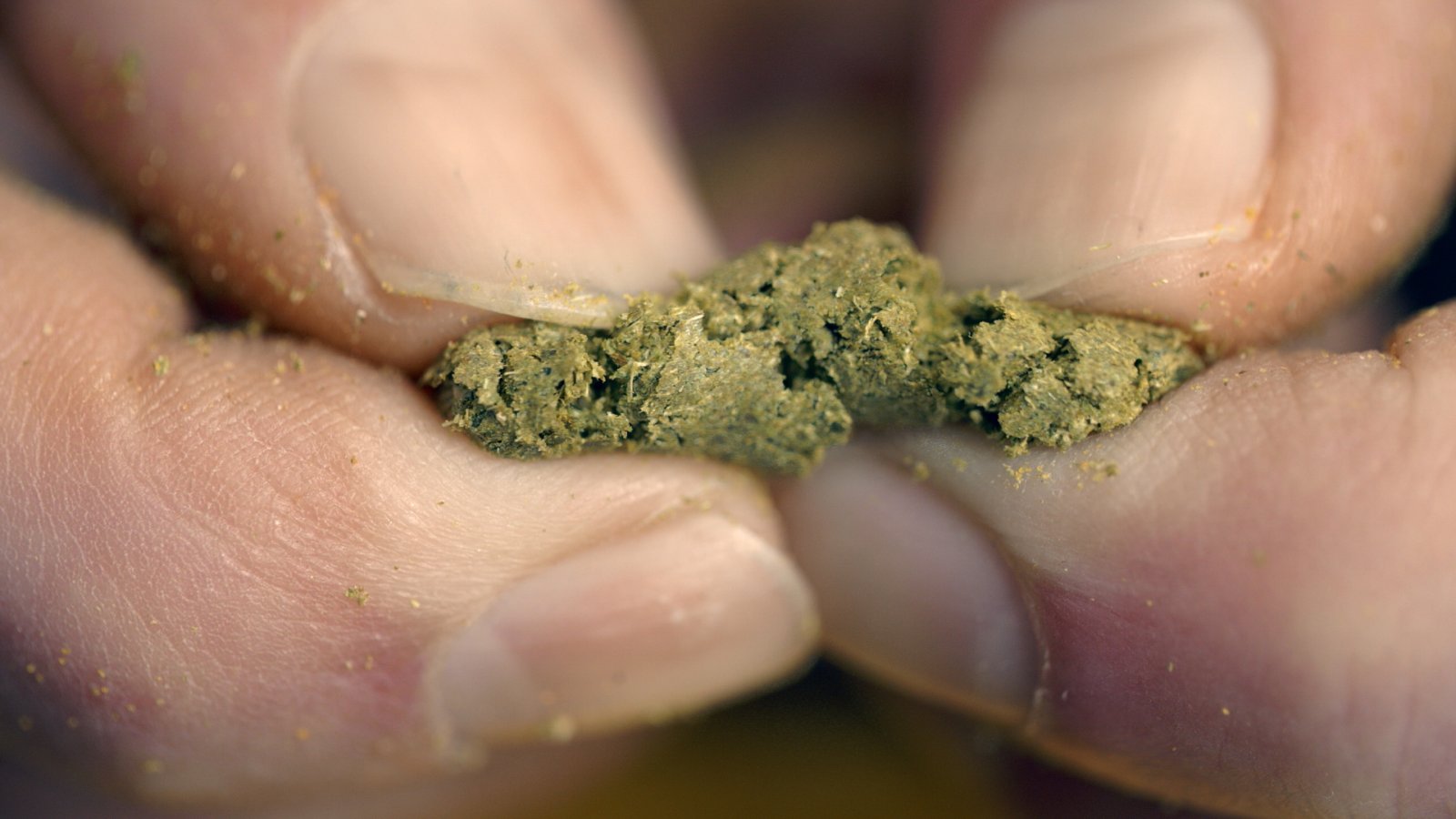What Makes A High Quality Hop Pellet?

The pellet mill is is full steam (technically solar & wind) ahead here in the Willamette Valley. The production team is operating two shifts a day producing Crop Year 2023 T-90 pellets ahead of our projected schedule. Pellet quality is a talking point from every hop supplier in the industry, but what really makes a high-quality hop pellet? Let’s break it down into four key quality checkpoints:
Timing
Because hop varieties degrade at different rates, we plan the processing schedule around and prioritize the varieties that degrade the quickest. While cold storage can buy time, it’s not a cure-all. For example, even when stored frozen, Centennial and Idaho 7® hop bales degrade at a faster rate than other varieties and must be processed quickly to maintain their quality. Conversely, varieties like Nugget have great storage attributes and are safely processed toward the end of the pelleting season.
 Above: Hop bale being sent to the bale breaker
Above: Hop bale being sent to the bale breaker
Temperature
Raw hops move through a hammermill, which serves as a size reduction step converting leaf hop into hop powder. Screen size, residence time, and temperature management all play an important role in this critical step. When hop powder is forced through the pellet die to be turned into pellets, the friction in this process produces heat. Ensuring the hops are not exposed to critically high temperatures are crucial to their expressiveness. Hop pellets that have been exposed to high temperatures during processing can appear glassy or shiny and even have a burnt appearance. Minimizing the amount of time hop material is exposed to oxygen throughout the entire process is also important in creating high quality pellets.
Density
Pellets that are higher in density will sink to the bottom of the tank, providing little contact with the beer they are meant to flavor. Low-density T-90 pellets disperse more quickly and stay in suspension longer, allowing for more flavor and aroma transfer. Pellets that are too low in density may crumble in packaging and during use can disproportionally float on top of liquid during dry hopping.

The difference can be felt. When rubbed in your hands, high-density pellets may break but remain a solid pellet. Pellets of a proper density and particle size break up into a loose grind of plant matter that enables greater hop dispersion and aroma/flavor transfer during brewing.
Packaging
Oxygen, light, and heat are the enemies of hop quality! Hops should be stored in light-resistant foil bags that have been flushed with Nitrogen or Carbon Dioxide to remove any oxygen prior to sealing. Poor packaging leads to poor hop expression in your beer. Always store your hops below freezing temperatures to ensure minimal degradation of flavor and aroma.
Check out The Four Pillars of Hop Quality to learn more about the key decisions growers and processors make that affect hop quality and ultimately your beer.
